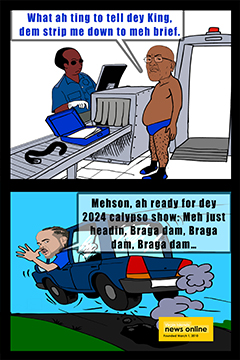The VI’s 70 year journey on the path of self-determination
November 24, 2019 will mark 70 years since the Great March of 1949 in which the people of the [British] Virgin Islands (VI) peacefully marched through Road Town to protest the gross neglect of the British Empire. The march at the time was the largest demonstration ever to take place in the islands and changed the course of VI history.
The demand by the marchers for political representation led the United Kingdom (UK) to agree to the restoration of the Legislative Council that had been abolished in 1901. Elections were subsequently held on November 27, 1950 that reestablished democracy and brought to a close a period of 49 years in which the people of the Virgin Islands were denied democratic rights and political participation in the governing of the islands.
These developments, and the subsequent adoption of the 1950 Constitution, were the critical first steps in self-government and the building of the modern VI.
In the decades that followed, periodic constitutional reviews between the VI and UK secured further gains in local autonomy that included the adoption of ministerial government in 1967, transfer of control of the public finances from the Governor to the elected Government in 1977 and the delegation of powers to the elected Government to conduct international relations in 2007.
Since 1949, the VI has seen governance evolve from UK direct rule to parliamentary democracy based on the Westminster system in which the Leader of Government Business, the Premier, is the Head of Government, while Her Majesty Queen Elizabeth II is the Head of State, represented by the Governor who serves as the de facto Head of State in the islands.
Through the initial measures taken by the UK and the restored Legislative Council in the 1950s and 60s, and the subsequent efforts of successive VI Governments since 1967, the foundation of a modern state has been laid with the establishment of functioning Executive, Legislative and Judicial branches of government and a supporting bureaucracy of state institutions.
The miraculous economic transformation of the society from an agrarian economy to a premier tourist destination and international financial centre (IFC) would not have occurred without the granting of greater authority to the local Government over the islands’ affairs.
From 1949 onward, the thrust of VI political history has been a continuous drive by the VI for greater autonomy in becoming the master of its own destiny. This spirit of self-determination remains at the heart of the Virgin Islands story.
The VI’s inalienable right to self-determination, enshrined in the Charter of the United Nations (UN) (i.e. Article 73-74) and the UN Declaration on the Granting of Independence to Colonial Countries and Peoples (December 14, 1960), gives the people of the VI the right to decide their own political future at a time of their choosing.
The UN officially lists the VI as one of the 17 Non-Self-Governing Territories (NSGTs) under its remit that has the option to either become a sovereign independent state, have a free association with an independent state or integrate with an independent state.
The VI’s next constitutional review is an opportunity for the islands to secure, among other things, further advances in self-government, protections from arbitrary UK interference in the VI’s affairs and a referendum by 2030 or thereafter on the VI’s political future.
The VI’s seventy-year journey on the path of self-determination has seen important advances in self-government and must continue even as the society rebuilds from hurricanes Irma and Maria.
A great debt of gratitude is owed to political heroes Theodolph H. Faulkner, Isaac G. Fonseca, Carlton L. de Castro and the more than 1,500 courageous men and women who marched on the UK Commissioner’s Office in Road Town seventy years ago to demand the right to give their children, grandchildren and great grandchildren a better future. It was their will and determination that paved the way for the emergence of modern-day VI.
As the VI celebrates the 70th anniversary of the Great March of 1949, it is imperative that the 24th of November be officially recognised as the national day that the people of the [British] Virgin Islands rose up and took their destiny into their own hands in their long struggle for freedom, human dignity and a better VI.
May the generations of today learn from their example.
The author is a Policy Fellow at the University of Cambridge’s Center for Science and Policy (CSaP).










.png)




.png)



.png)






















6 Responses to “The VI’s 70 year journey on the path of self-determination”